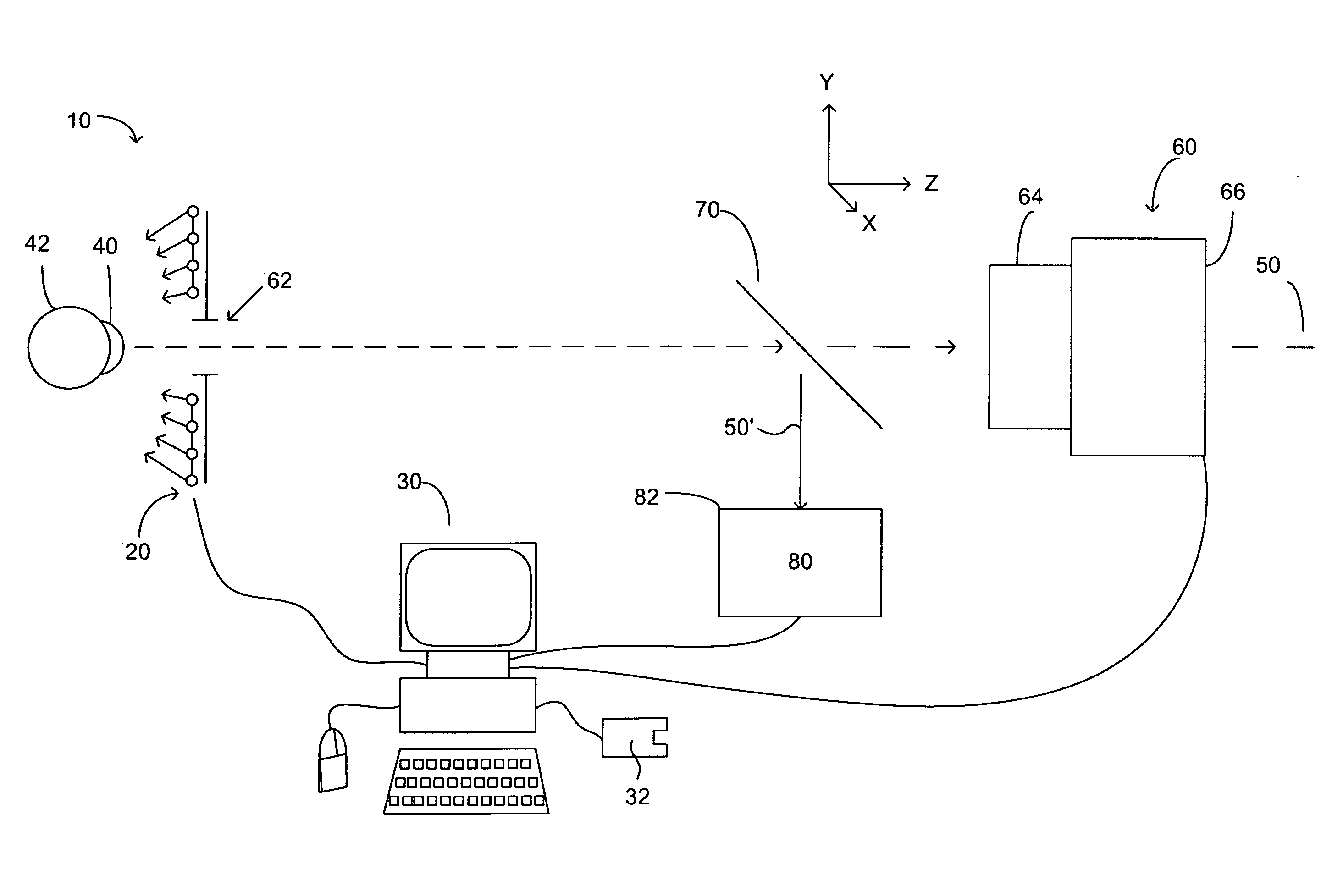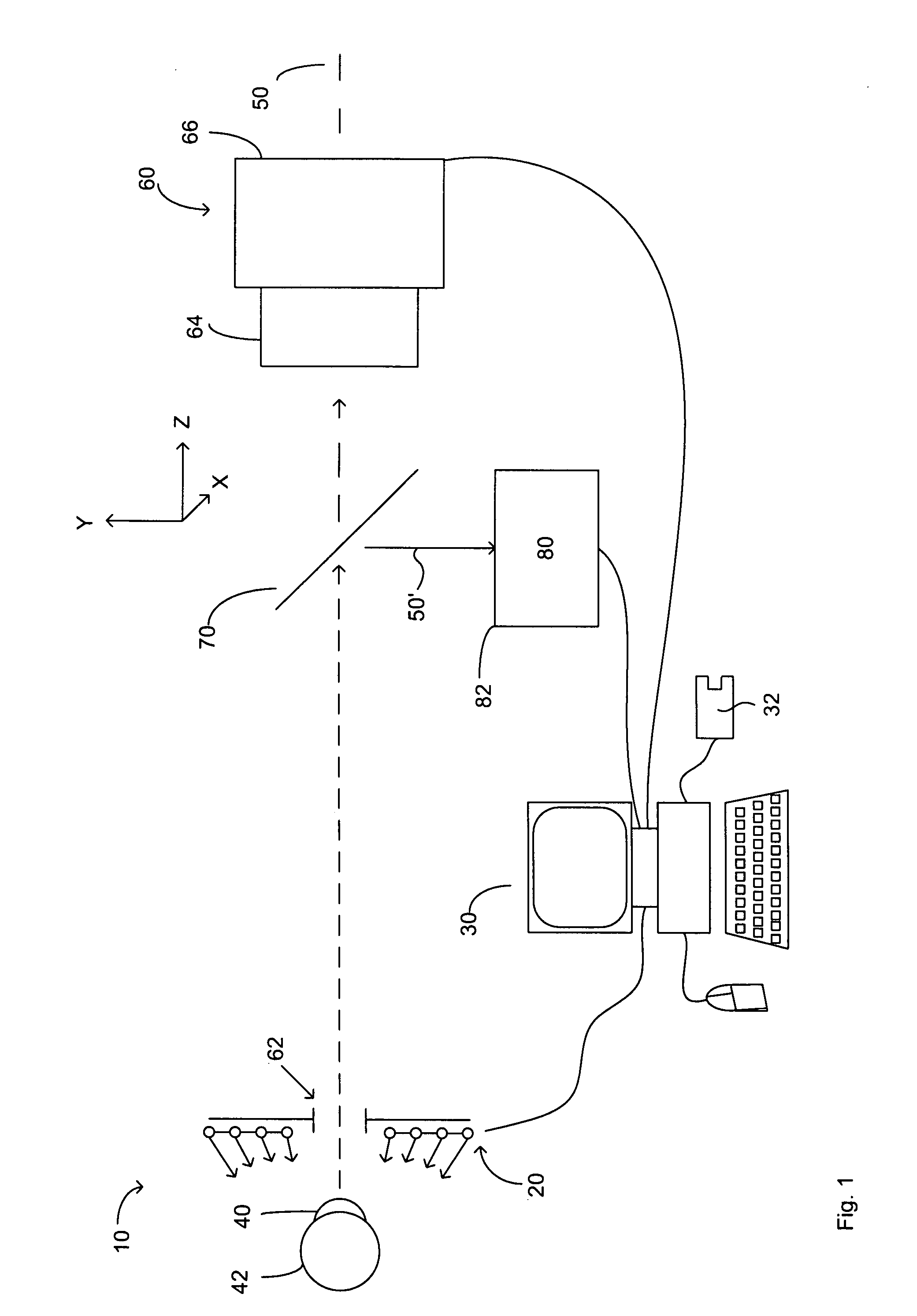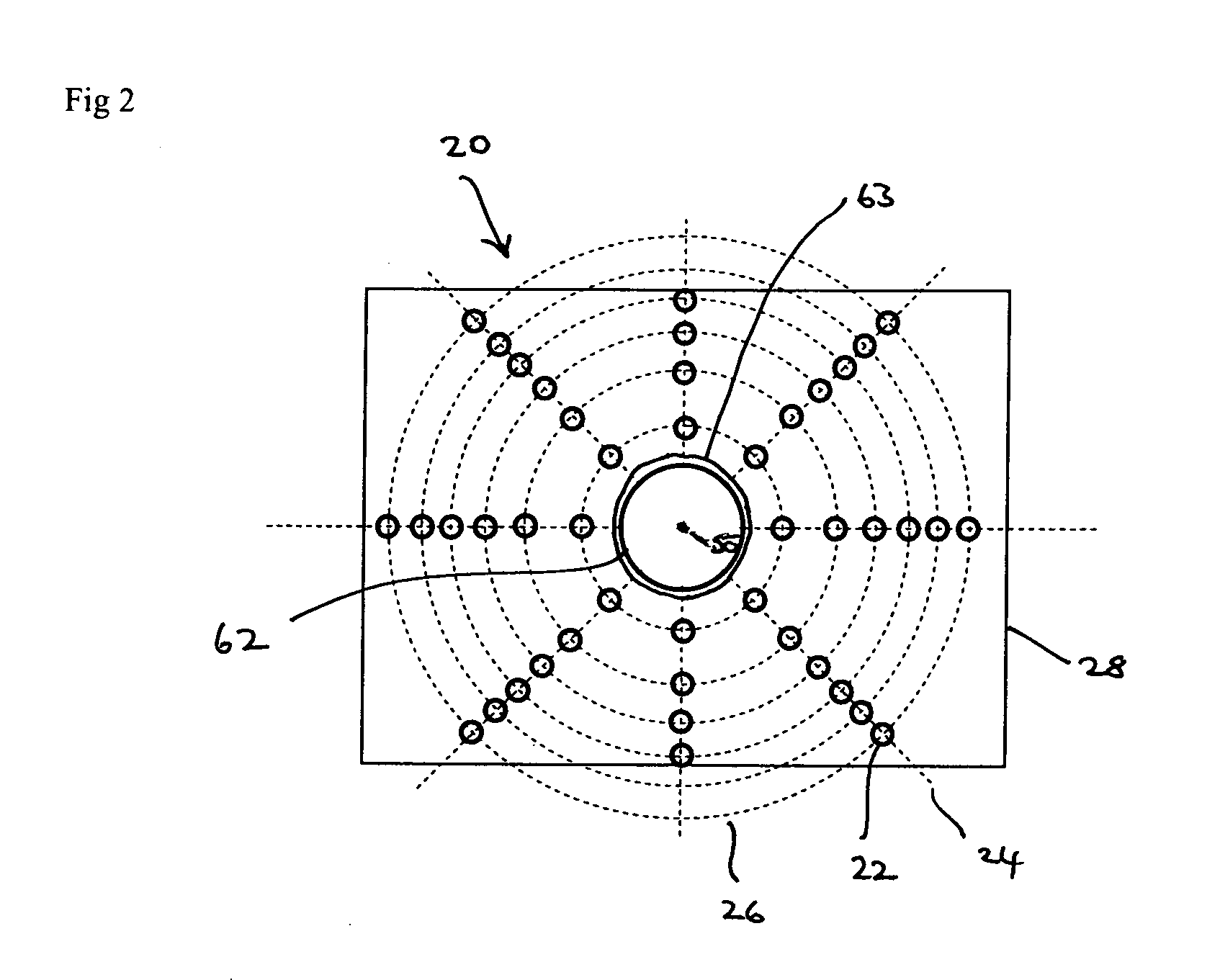Biometric authentication using the eye
a biometric authentication and eye technology, applied in the field of biometric authentication using the eye, can solve the problems of high technical difficulty, long delay, and no biometric parameter to date has proven to be perfectly accurate and practical, and achieve the effect of great rapidity
- Summary
- Abstract
- Description
- Claims
- Application Information
AI Technical Summary
Benefits of technology
Problems solved by technology
Method used
Image
Examples
Embodiment Construction
[0048]Referring now to FIG. 1 the Corneal Specular Reflex Authentication (CSRA) system 10 comprises a pattern of target lights 20 controlled by a computer 30 to selectively project an image of the target lights onto the cornea 40 of the eye 42 of a subject that is aligned with the axis 50 of a camera system 60.
[0049]The camera system 60 comprises an optical aperture 62, a telecentric lens 64 and an image sensor 66 aligned along the optical axis 50.
[0050]A beam splitter 70 is also located on the axis 50 behind the aperture 62. The beam splitter 70 is positioned at 45° with respect to axis 50 to reflect some of the light travelling along the axis to a self alignment aid 80.
The System
[0051]The elements of the system will now be described in greater detail with reference to FIGS. 1 to 4.
[0052]Referring first to FIG. 2 the target lights 20 comprise forty-eight point light sources 22 arranged in a pattern defined by the intersection of virtual lines 24 radiating from axis 50 and virtual c...
PUM
 Login to View More
Login to View More Abstract
Description
Claims
Application Information
 Login to View More
Login to View More - R&D
- Intellectual Property
- Life Sciences
- Materials
- Tech Scout
- Unparalleled Data Quality
- Higher Quality Content
- 60% Fewer Hallucinations
Browse by: Latest US Patents, China's latest patents, Technical Efficacy Thesaurus, Application Domain, Technology Topic, Popular Technical Reports.
© 2025 PatSnap. All rights reserved.Legal|Privacy policy|Modern Slavery Act Transparency Statement|Sitemap|About US| Contact US: help@patsnap.com



